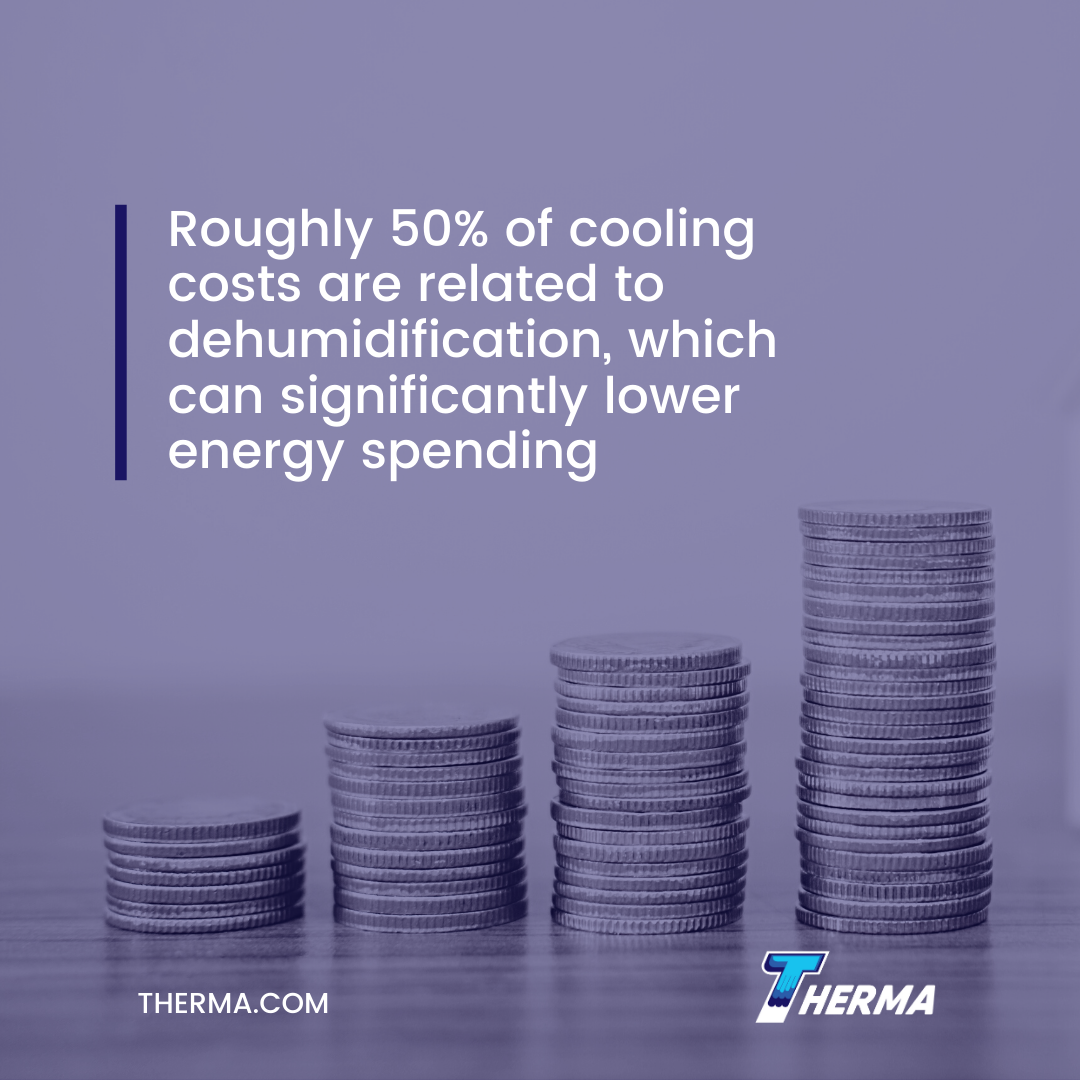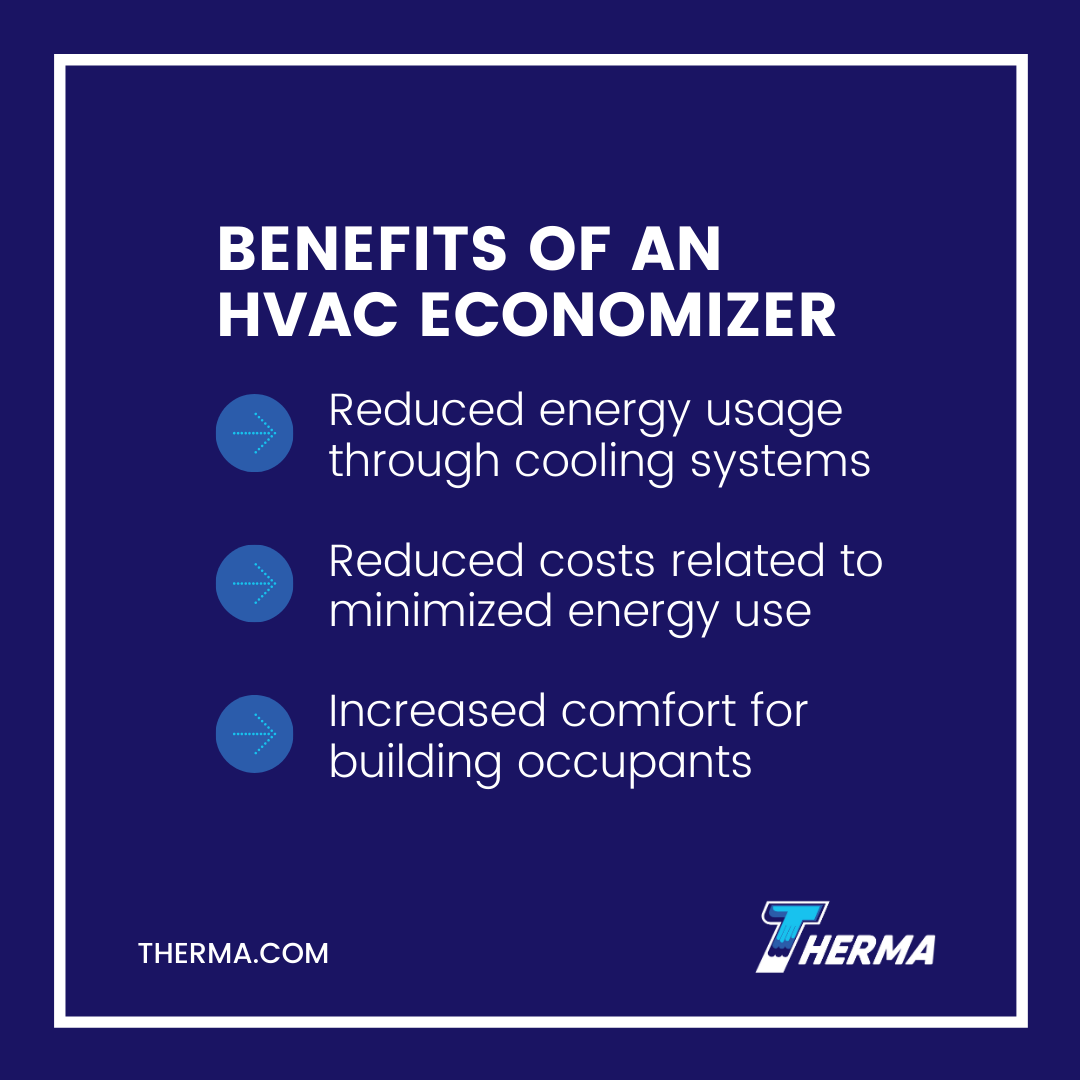What are HVAC economizers? Standard HVAC systems are designed according to fundamental parameters. An HVAC economizer hones those parameters based on the environment in which it operates.
HVAC economizers often get a bad rap. Frequently misunderstood and poorly implemented, economizers are often thought to cause more harm than good when it comes to regulating energy consumption.
Understanding the different types of economizers and how they work can help you get the most out of your HVAC system.
What Is An HVAC Economizer?
An economizer is a device designed to reduce energy usage. It does so by shifting as much of the cooling supply air source as possible to outside air when feasible, instead of continuously cooling recirculated air.
Economizers are required for new and retrofit construction with HVAC units exceeding 54,000 Btu/hr. Exceptions exist for several geographic locations, including the southern tip of Florida, Puerto Rico and Hawai’i, where the climate is so hot and humid it renders an economizer useless.
Demand-control ventilation systems depend on economizers to help precisely deliver the correct amount of fresh air required for optimal indoor air quality and to reduce the CO2 based on building occupancy at different times.
Different Types of Economizers
Several different types of economizers can be installed to regulate fresh air delivery into the HVAC system. All are designed to change dampener positions, altering the amount of outside air entering the system, up to 100%.
Dry Bulb Economizers
Fixed dry-bulb economizers are designed to shift the system to 100% outside air and shut off the cooling cycle if/when outside air temperatures are equal to or lower than recirculated supply air temperatures. Dry bulb economizers do not measure outside air humidity.
Differential dry-bulb economizers also shift the system to 100% outside air if /when outside air temperatures are equal to or lower than recirculated supply air temperatures. The difference with dry-bulb economizers–compared to fixed dry-bulb economizers–is that they will continue to operate the cooling cycle until the newly introduced outside air supply reaches the supply air temperature.
Their main disadvantage is that they fail to take humidity into account. If it is already cool and damp inside, air may be cooled more rapidly, causing the humidity to reach uncomfortable levels.

Enthalpy Economizers
In terms of chemical thermodynamics, enthalpy is the sum of internal energy and pressure times volume (or H = E + PV). That means enthalpy economizers are those that measure heat plus the pressure multiplied by the volume of the thermodynamic system. This process makes them more accurate than dry bulb economizers and less likely to increase the humidity inside your facility.
It is estimated that roughly 50% of cooling costs are related to dehumidification, which can help significantly lower energy spending. A single enthalpy economizer will shift the system to 100% outside air and shut off the cooling cycle only if /when the outside air enthalpy is equal to or lower than the supply air enthalpy.
A differential enthalpy economizer will also shift the system to 100% outside air if /when the outside air enthalpy is equal to or lower than the supply air enthalpy. It will continue to operate the cooling cycle until the enthalpy of the newly introduced outside air reaches the supply air enthalpy.
An integrated differential enthalpy economizer is similar to the differential type, except that the controls can be hooked to an indoor multi-stage thermostat. This allows for enhanced control over the system and compressor activation during cooling cycles.
If both the temperature and enthalpy of the outdoor air are low enough, the economizer will be used for first-stage cooling. If the space cannot be cooled with outdoor air alone, the system’s compressor will activate and initiate the cooling cycle, effectively delivering second-stage cooling.
Benefits of HVAC Economizers
Adding an economizer or upgrading your economizer can help benefit your facility in several ways:
- Reduced energy usage through cooling systems that you can turn off when the outside air can be used for cooling
- Reduced costs related to minimized energy use and the ability to modulate temperature more accurately
- Increased comfort for building occupants thanks to adjusted humidity (with enthalpy economizers) and lower CO2 (when used as part of demand-control ventilation)
Economizers can be a great benefit when properly installed and maintained, especially in cool, dry climates and can reduce HVAC costs with appropriate economizer implementation.








